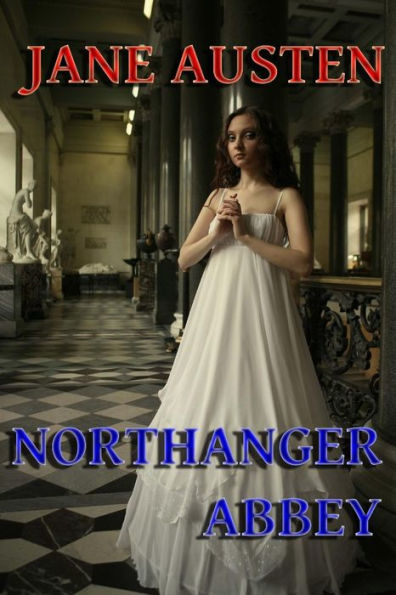Imitation is the sincerest form of flattery, they say, even in the book world. There are plenty of great parody novels out there (Sherlock Holmes pastiches alone could fill up their own bookstore section), but some novels that begin life as commentary or satire on a genre later prove to be lasting entrants into that genre’s canon. We’ve […]
Seventeen-year-old Catherine Morland is one of ten children of a country clergyman. Although a tomboy in her childhood, by the age of 17 she is "in training for a heroine" and is excessively fond of reading Gothic novels, among which Ann Radcliffe's Mysteries of Udolpho is a favourite.
Catherine is invited by the Allens, her wealthier neighbours in Fullerton, to accompany them to visit the town of Bath and partake in the winter season of balls, theatre and other social delights. Although initially the excitement of Bath is dampened by her lack of acquaintances, she is soon introduced to a clever young gentleman,
Henry Tilney, with whom she dances and converses. Much to Catherine's disappointment, Henry does not reappear in the subsequent week and, not knowing whether or not he has left Bath for good, she wonders if she will ever see him again. Through Mrs Allen's old school-friend Mrs Thorpe, she meets her daughter Isabella, a vivacious and flirtatious young woman, and the two quickly become friends. Mrs Thorpe's son John is also a friend of Catherine's older brother, James, at Oxford where they are both students.
It was revised by Austen for the press in 1803, and sold in the same year for £10 to a London bookseller, Crosby & Co., who decided against publishing. In the spring of 1816, the bookseller was content to sell it back to the novelist's brother, Henry Austen, for the exact sum-£10-that he had paid for it at the beginning, not knowing that the writer was by then the author of four popular novels.
The novel was further revised by Austen in 1816/17, with the intention of having it published. Among other changes, the lead character's name was changed from Susan to Catherine, and Austen retitled the book Catherine as a result.
Austen died in July 1817. Northanger Abbey (as the novel was now called) was brought out posthumously in late December 1817 (1818 given on the title page), as the first two volumes of a four-volume set that also featured another previously unpublished Austen novel, Persuasion. Neither novel was published under the title Jane Austen had given it; the title Northanger Abbey is presumed to have been the invention of Henry Austen, who had arranged for the book's publication.
Seventeen-year-old Catherine Morland is one of ten children of a country clergyman. Although a tomboy in her childhood, by the age of 17 she is "in training for a heroine" and is excessively fond of reading Gothic novels, among which Ann Radcliffe's Mysteries of Udolpho is a favourite.
Catherine is invited by the Allens, her wealthier neighbours in Fullerton, to accompany them to visit the town of Bath and partake in the winter season of balls, theatre and other social delights. Although initially the excitement of Bath is dampened by her lack of acquaintances, she is soon introduced to a clever young gentleman,
Henry Tilney, with whom she dances and converses. Much to Catherine's disappointment, Henry does not reappear in the subsequent week and, not knowing whether or not he has left Bath for good, she wonders if she will ever see him again. Through Mrs Allen's old school-friend Mrs Thorpe, she meets her daughter Isabella, a vivacious and flirtatious young woman, and the two quickly become friends. Mrs Thorpe's son John is also a friend of Catherine's older brother, James, at Oxford where they are both students.
It was revised by Austen for the press in 1803, and sold in the same year for £10 to a London bookseller, Crosby & Co., who decided against publishing. In the spring of 1816, the bookseller was content to sell it back to the novelist's brother, Henry Austen, for the exact sum-£10-that he had paid for it at the beginning, not knowing that the writer was by then the author of four popular novels.
The novel was further revised by Austen in 1816/17, with the intention of having it published. Among other changes, the lead character's name was changed from Susan to Catherine, and Austen retitled the book Catherine as a result.
Austen died in July 1817. Northanger Abbey (as the novel was now called) was brought out posthumously in late December 1817 (1818 given on the title page), as the first two volumes of a four-volume set that also featured another previously unpublished Austen novel, Persuasion. Neither novel was published under the title Jane Austen had given it; the title Northanger Abbey is presumed to have been the invention of Henry Austen, who had arranged for the book's publication.

Northanger Abbey
252
Northanger Abbey
252Related collections and offers

Product Details
| ISBN-13: | 9780615830735 |
|---|---|
| Publisher: | Denton & White |
| Publication date: | 06/06/2013 |
| Pages: | 252 |
| Product dimensions: | 6.00(w) x 9.00(h) x 0.53(d) |
About the Author

